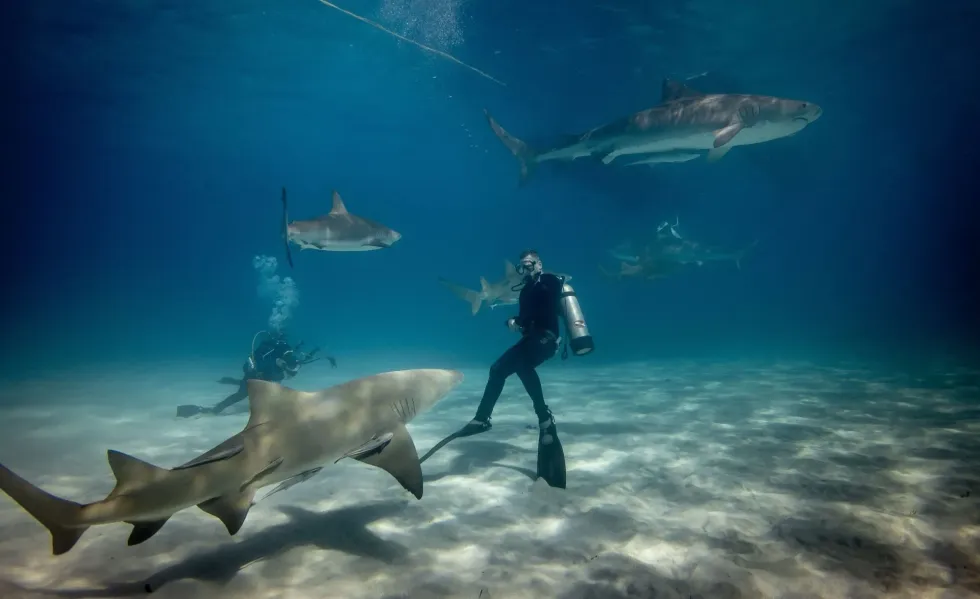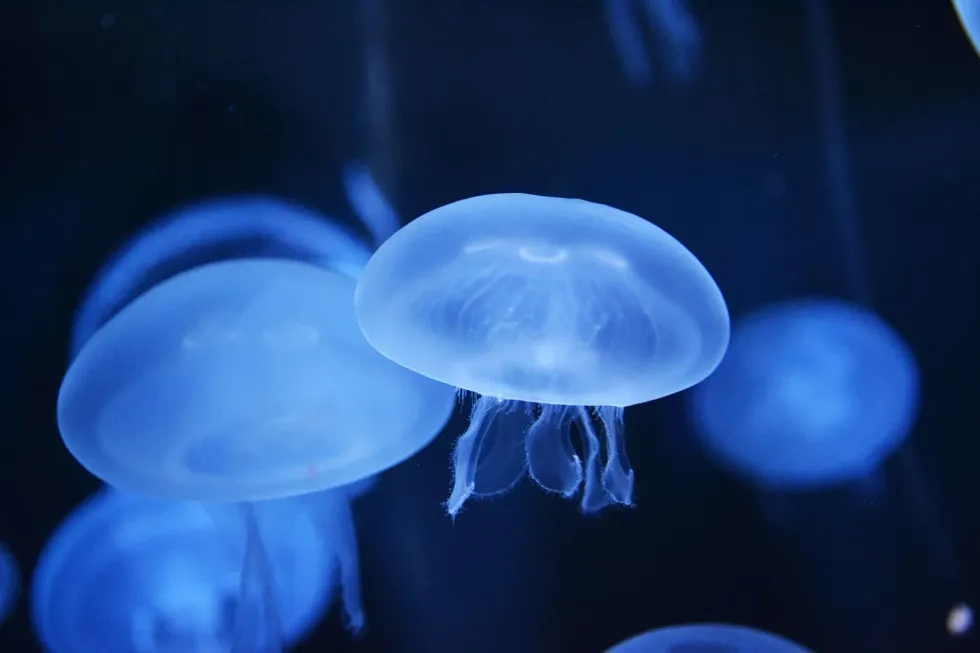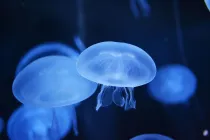Dangerous Sea Creatures That You Wouldn't Want To Bump Into

Content
- What is the most dangerous creature in the sea?
- What sea creature can kill a shark?
- What is the strongest creature in the ocean?
- What sea creatures are actually dangerous and can kill a human?
- What kind of dangerous fish or sea creatures can attack a sailboat?
- What are some peaceful sea creatures that are dangerous if provoked?
- Human-Marine Life Interaction
Do you know that more than 80% of our ocean remains undiscovered?
While diving deep into the water, you may discover some adorable creatures, and you will enjoy watching them. However, some creatures might be downright deadly if you go too close.
Much remains to be learned from exploring the mysteries of the deep. Let us assist you in taking a closer look at some dangerous sea creatures, how they kill, and where you may find them. If you intend on diving and looking forward to understanding the intriguing water life, stay away from these dangerous species.
Swimming or diving in the oceans isn't always a good idea, whether it's because of the water quality or the deadly animals that live there. Here are a few oceans on the Earth where swimming in water might harm you or even cause death.
First on the list is the West End in Grand Bahama Islands, as it has a significant population of tiger sharks. Secondly, Queensland, Australia, is home to box jellyfish, Irukandji jellies, scorpionfish, cone snails, sharks, and saltwater crocodiles.
Next is Dominica's Boiling Lake, which is dangerous for a different reason. It is not the aquatic life that will harm you but the higher water temperatures.
Swimming on Barbados' East and North Coasts might mean battling for your life against dangerous riptides, deadly crashing waves, and dramatic tides. Finally, The Red Triangle, Central Coastal California, where white shark sightings are more common than virtually everywhere else.
As you meet some of the ocean's predators in our present article, dangerous sea creatures, do have a look at marlin vs. swordfish and bull shark vs. great white.
What is the most dangerous creature in the sea?
There are many marine creatures to be found when you dive deep underwater. They are fascinating, graceful, and interesting to observe in the water, but keep an eye on them since they may give a painful sting.
But you would be surprised if we told you that there is a type of jellyfish, namely box jellyfish, which happens to be one of the ocean's deadliest animals. These deadly box jellyfish species are mostly limited to the tropical Indo-Pacific oceans.
While few species may be found in the Atlantic Ocean and the eastern Pacific Ocean, and a handful of species can be found in Hawaiian waters.
However, there are around 51 different species of box jellyfish with various degrees of deadliness. Out of these box Jellyfish, the Chironex fleckeri, Carukia barnesi, and Malo Kingi species are the most venomous.
It is so powerful that if one of its tentacles touches you, which has a sting that can cause cardiac arrest and possibly death before you reach the shore. Even a less venomous creature can still be potentially fatal to children.
The most venomous fish of the family is Chironex fleckeri, usually identified as the Australian box jelly. It is known for its sting and possesses tentacles up to 10 ft (3.04 m) long coated in millions of explosive cells known as Cnidocytes.
When these tentacles are touched, they produce tiny darts conveying powerful venom.
A stung person generally experiences enormous pain, and if the sting area is large and is not immediately treated, then a person may die in two to five minutes.
It is claimed that one animal's venom is enough to kill 60 adult people. Because of its faint bluebell color and nearly translucent appearance, the species is difficult to see in its surroundings, creating a challenge to swimmers and earning the name sea wasp.
If someone had been stung by Carukia barnesi, that might cause the Irukandji syndrome, which produces severe body aches, nausea, sweating, high blood pressure, and trouble breathing. If left untreated, it can lead to an excruciating death.
On the other hand, Malo Kingi, often known as the common kingslayer, is a kind of Irukandji jellyfish. Though barely bigger than a human thumbnail and has a translucent bell and light purple nematocyst warts, making it difficult for victims to detect them before being stung.
A flower urchin, a kind of sea urchin, might be another venomous creature lurking beneath the waves. As we plunge into the water, this sea urchin with spherical bodies of pinkish-white or yellowish-white hue and a center purple dot may draw our notice.
However, each petal is a tentacle with a small mouth that may inject dangerous venoms and are very toxic. The Guinness Book of World Records pronounced this as the most hazardous sea urchin for their painful sting in 2014.
What sea creature can kill a shark?
Though the great white shark is often regarded as the top marine predator, several other predators command the oceans over sharks. Let's find out who they are.
Firstly on the list is Orcas, which are toothed whale that belongs to the dolphin family. These orcas are recognized as apex predators, as they have no natural predators and devour a wide range of prey, including fish, sharks, seals, dolphins, rays, whales, and squids.
Some incidences marked were ancient sailors sighted groups of orcas hunting and murdering larger species earning them the moniker killer whale.
Another predator of sharks could be a saltwater crocodile, which is the world's biggest living reptile and crocodilian. The saltwater crocodile can attack its victim with its powerful jaws accountable for the animal world's strongest bite. It can endure almost any animal entering its territory, including other natural predators such as sharks, various fishes, other animals, and even humans.
What is the strongest creature in the ocean?

As we find more exciting facts about oceans, the ocean creatures might be several of the strongest animals that exist. Let's look at one of the best.
The great white shark is recognized as the world's biggest predatory fish found in cold, coastal waters worldwide. Even with an extraordinarily strong physique, these great white sharks are capable of chasing down some of the ocean's quickest swimmers.
The great white's shape is admirably fitted to a life of predation, reaching lengths of up to 20 ft (6.1 m) and weighing up to 5,000 lb(2268 kgs).
It is the only known living species of its genus Carcharodon and has been reported to have thousands of unprovoked attacks on humans worldwide than any other shark. Bull sharks and tiger sharks follow it.
What sea creatures are actually dangerous and can kill a human?
The blue-ringed octopus is a very poisonous marine creature on the planet. This poisonous blue-ringed octopus is found in Japan and Australia's coral reefs and tidal pools in the Pacific and Indian oceans. Its sting can be extremely painful.
Despite their diminutive size and gentle character, they produce venom that contains tetrodotoxin, tryptamine, octopamine, histamine, acetylcholine, taurine, and dopamine. If not addressed, blue-ringed octopus venom can cause nausea, respiratory arrest, heart failure, blindness, and possibly complete paralysis, and death within minutes.
This blue-ringed octopus spends much of its time hiding in crevices or coral reefs and exhibiting effective patterns in camouflaging using its dermal chromatophore cells. Still, when threatened, these octopuses' initial desire is to leave.
If the threat continues, they adopt a defensive posture as they change color, turning into brilliant yellow, exhibiting bright iridescent blue rings flashing for a third of a second as a warning display and bite, injecting a potent venom enough to kill over 20 humans.
The second predator of this kind is a stonefish, which lives in the coastal parts of the Indo-Pacific. Stonefish will not attack you; however, stings occur primarily due to tramping on it, as they are difficult to spot because they resemble rocks or coral.
This stonefish venom is one of the world's most poisonous venom, and stings can be fatal if not treated. Stonefish stings can occur on the shore as stonefish can live for up to 24 hours out of the water. Fortunately, several highly effective antidotes are available, and stonefish antivenom is the second most commonly used in Australia.
One more dangerous creature, cone snails, has rich colors and appealing patterns; hence, humans may sometimes pick up the living critters. This could be dangerous as the snail frequently discharges its harpoon in these circumstances.
Some of the bigger species of cone snail have harpoons that may pierce gloves or wetsuits. The venom of a single cone snail can kill up to 700 people.
What kind of dangerous fish or sea creatures can attack a sailboat?
Not all attacks are purposeful. It is well known that fish frequently jump out of the water and strike the boat unintentionally; nonetheless, certain predators may attack a boat if they feel threatened.
To begin with, it could be whales, as they are large, and an unintentional collision may – and often does – destroy ships, sometimes even killing the people on board, without the whale intending to do so. Following that, a shark may attack a boat out of curiosity or confusion.
Sharks have no desire to be predators and hunt us down as a food source.
Sharks only bite an object out of curiosity. If they are following their prey and that school of fish or prey passes right by your boat, they may end up attacking your boat to get the fish.
Orcas or killer whales may consider attacking a boat as they notice numerous fish in a single pre-packaged container for food.
Though there has been no evidence of a squid sinking a boat or ship, there are several stories in which giant squids attack ships to catch the fishes in that.
Next are the crocodiles less than seven ft (2.12m), which usually do not harm humans as they try to consume something larger than themselves. But they feel threatened; even a smaller one may take a quick bite out of a human.
Another to list is the great barracuda, which is a large fish found in subtropical oceans. The great barracuda resemble snakes in appearance, with prominent, sharp teeth, similar to piranha, of varying sizes positioned in sockets of their huge jaws.
These barracuda, which may grow 6 ft (182.8 cm) long, employ rapid speed and ambush techniques to catch their fish. However, they do not attack humans, but such incidents of attack are possibly caused by poor visibility or object that glint and shine as prey.
What are some peaceful sea creatures that are dangerous if provoked?
Sea snakes, or coral reef snakes, are found in tropical waters from the Indian Ocean to the Pacific and are closely linked to venomous terrestrial snakes in Australia. Sea snakes belong to the cobra family and carry the most deadly venoms of any snake.
Sea snakes are generally reluctant to sting and are thought to be mild-mannered; nevertheless, certain species are more prone to attack when provoked because they employ their venom in defense. When a sea snake stings, it is typically painless and may not even be recognized when contact is established.
Moreover, the venom is very slow-acting, with symptoms ranging from 30 minutes to many hours.
A similar creature is the Beaked sea snake which is not aggressive and will strike only if provoked. A Beaked sea snake or Hooked-nosed sea snake may be found along the coasts of India, Australia, Africa, and the Arabian Sea.
A sea snake bite is said to be eight times more poisonous than that of a cobra. Only a few milligrams of its venom is strong enough to kill a human, whereas a full dose can kill up to 22 individuals.
Human-Marine Life Interaction
Many people love to interact with marine creatures in their natural environment as the ocean provides humans the privilege to take part in leisure activities on the water.
These human interactions endanger marine creatures' health and well-being. While driving them away from their usual environment, disturbing their social groupings, poisoning them with improper food, as well as exposing them to fish hooks and boat propellers are all possible effects.
These unintentional harassments may be committed by anybody who approaches a wild animal to touch, feed, or pose for pictures with it.
The increased popularity of whale-watching and other marine-mammal viewing raises the possibility of a hazard to the creatures.
Hence, remember that when u wish to see a marine creature, keep at least 100 yards(91 m) away and carry binoculars to keep you safe. If a whale or shark comes within 100 yards(91 m) of your boat, put the engine in neutral and let it pass.
Here at Kidadl, we have carefully created lots of interesting family-friendly facts for everyone to enjoy! If you liked our suggestions for dangerous sea creatures, then why not take a look at the biggest sea creature ever or mako shark facts?
We Want Your Photos!
More for You
See All
Master of Business Administration

Deepthi ReddyMaster of Business Administration
With an MBA under her belt, Deepthi has discovered her true calling in content writing. Her writing repertoire is diverse, covering travel, movies, pet care, parenting, animals and birds, and more. Her joy of learning and creating has helped her craft well-written and engaging articles. When she isn't writing, Deepthi enjoys exploring new cultures, trying different foods, and spending quality time with her two children aged 7 and 12.
Bachelor of Arts specializing in English, Bachelor of Education specializing in the Language Arts

Amatullah GulbargawalaBachelor of Arts specializing in English, Bachelor of Education specializing in the Language Arts
Amatullah is a passionate student pursuing a Bachelor of Arts and Bachelor of Education from Ashoka College of Education. With a keen interest in literature, she has excelled in elocution competitions and is an accomplished writer. She has completed courses like "History of English Language and Literature", "Introduction to Western Political Thought and Theory", and "Development of Soft Skills and Personality". In her free time, Amatullah enjoys reading books and writing poetry.
Disclaimer
1) Kidadl is independent and to make our service free to you the reader we are supported by advertising. We hope you love our recommendations for products and services! What we suggest is selected independently by the Kidadl team. If you purchase using the Buy Now button we may earn a small commission. This does not influence our choices. Prices are correct and items are available at the time the article was published but we cannot guarantee that on the time of reading. Please note that Kidadl is a participant in the Amazon Services LLC Associates Program, an affiliate advertising program designed to provide a means for sites to earn advertising fees by advertising and linking to Amazon. We also link to other websites, but are not responsible for their content.
2) At Kidadl, we strive to recommend the very best activities and events. We will always aim to give you accurate information at the date of publication - however, information does change, so it’s important you do your own research, double-check and make the decision that is right for your family. We recognise that not all activities and ideas are appropriate for all children and families or in all circumstances. Our recommended activities are based on age but these are a guide. We recommend that these ideas are used as inspiration, that ideas are undertaken with appropriate adult supervision, and that each adult uses their own discretion and knowledge of their children to consider the safety and suitability. Kidadl cannot accept liability for the execution of these ideas, and parental supervision is advised at all times, as safety is paramount. Anyone using the information provided by Kidadl does so at their own risk and we can not accept liability if things go wrong.
3) Because we are an educational resource, we have quotes and facts about a range of historical and modern figures. We do not endorse the actions of or rhetoric of all the people included in these collections, but we think they are important for growing minds to learn about under the guidance of parents or guardians.







